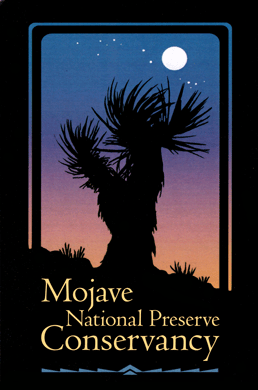The Mojave National Preserve Conservancy and the Old Town Sidewalk Astronomers routinely gather for star gazing at the Black Canyon Group Campground in the Preserve. The location is perfect for its night sky, but during the day visitors can also explore millions of years of geologic history right before their eyes.
The campground is located in an area of the Preserve known as "Hole in the Wall" for the interesting geologic formations that adorn the cliffs there. Whether you are admiring the nearby cliffs from a relaxing perch at the campground or taking a hike along the Rings Loop or Barber Peak Loop trails, it's worth knowing that the beautiful formations are actually evidence of a violent geologic history.
Nearly 18.5 million years ago volcanic eruptions were dramatically re-shaping the landscape in this portion of the Mojave. Geologist Mike McCurry's studies found that magma forcing its way through the Earth's crust at the time likely generated earthquakes and eventually blanketed the area with lava and ash up to 200 meters thick.
These mesas next to the Black Canyon Group and Equestrian Campground are composed of layer upon layer of volcanic tuff, a mixture of volcanic rock and mineral fragments in a mixture of volcanic ash formed millions of years ago.
Nearly a million years later, the area experienced another period of significant volcanic activity, consisting of three eruptive episodes. During one of the eruptions, fragments of rock 20 meters across were hurled into the air. The area over the site of the eruption, located east of what we now call Hole in the Wall, collapsed and formed a caldera, which was then partially filled by volcanic debris. Two more eruptive episodes shook the region after more magma built up just under the Earth's surface.
Empty pockets left in the rock are evidence of gas trapped in fallen ash during volcanic activity millions of years ago.
The volcanic activity quieted down for a period of 100,000-200,000 years before eruptions again re-shaped this part of the Preserve. Thick flows of Rhyolite lava seeped out of vents in the caldera formed by previous eruptions. This was the last time the Hole in the Wall area experience such significant volcanic activity.
Some of the interesting formations you see on the Rings Loop Trail are the result of gasses trapped in fallen ash that left empty pockets. The ash solidified to rock, and the pockets were eventually exposed again through erosion.
But another part of the present-day Mojave National Preserve would later experience volcanic eruptions. You can explore cinder cones along Kelbaker Road in the western half of the Preserve that are the result of lava flows from 7.6 million years ago. We'll write more about those in a future post!
Are you interested in learning more about the geology of the Hole in the Wall area? Check out the self-guiding field trip materials made available through the US Geological Survey.

